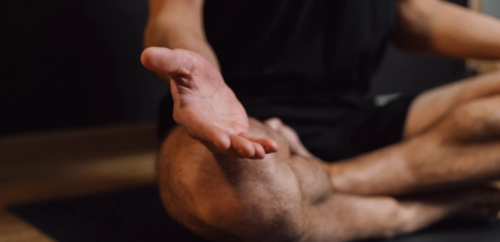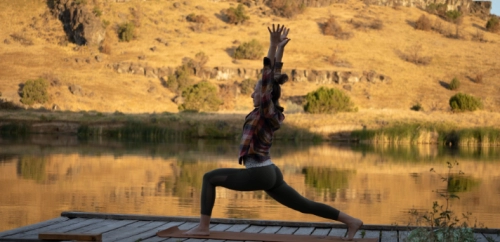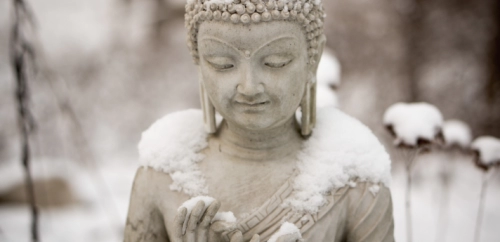What Is Vipassana Meditation

Meditation is a tool used by millions to create a calm in their lives and align themselves with the energies of the outer and inner world. But there are many types of meditation to choose from, and it might be pretty challenging to choose the one that is right for you. One of the options you may be looking at is Vipassana.
Vipassana is the oldest form of Buddhist meditation, and it centers around mindfulness. In fact, most people use the two words interchangeably, even though mindfulness is so much more than just meditation. This meditation is basically meditation through visualization.
To decide if this type of meditation is for you, we wanted to give you a quick guide on everything you need to know about Vipassana meditation.
A Little About Vipassana Meditation
Vipassana meditation is the oldest form of Buddhist meditation practice known. The overall practice itself comes directly from the sutta known as the foundations of mindfulness, which has been attributed to Buddha.
This type of meditation walks the person through a very direct and gradual growth towards a more mindful life. It is not a quick fix and takes many years to become a guru in this discipline. These individuals' intense examination of everything around them allows them to create better focus and notice the change in the flow of their lives.
It is a gentle meditation yet focused. Vipassana creates a more intense focal point when it comes to the minutest detail of the world and life of the individual. This very ancient practice is intended to train your mind to be more about the present by focusing on attentive listening and mindful alertness to the ebb and flow of the activities surrounding one.
In other words, through guided visualization, the individual actively uses their five senses to stay in the moment and understand the situation they're in. This allows the individual to learn to be more active when listening and seeing what is going on in the world around them. This skill translates to the individual learning through Vipassana meditation to understand the truth of the impermanence of life.
The truth is, most of us think that we already live like this, but that is actually a falsity. We think this because we're paying attention to all the little things in our lives, but we're not really paying attention nor understanding what is going on. We overlook many things and don't pay close enough attention, and this causes more stress and anxiety, which can be alleviated by utilizing this ancient practice of Vipassana meditation.
Benefits of Vipassana Meditation
Just like with any type of meditation, there is a wealth of different benefits that you can take advantage of. Many of the benefits of Vipassana easily explain to you why it is such a great practice to incorporate into your daily life.
So with that being said, here are the main benefits of Vipassana meditation:
Stress Relief
One of the most dangerous types of stress is reactive stress. Meditation techniques like those utilized in Vipassana can relieve some of that. There have been many studies that show that people who have begun utilizing this type of meditation have seen a lower stress level throughout the course of their practice. Not only do these individuals feel more mindful of their situation, but they also have better all-around well-being and are kinder to themselves and those around them.
Less Anxiety
On top of helping with stress, meditation, especially Vipassana has been shown to decrease anxiety greatly. The anxiety reduction will help with your overall well-being and allow you to really enjoy your life, staying in the present at all times.
Better Mental Health
Through the relief of stress and anxiety, there's going to be a marked improvement in your mental health. Cities have shown those who utilize Vipassana meditation have more self-acceptance productivity, which leads to more positive relationships.
Increased Neuroplasticity
Neuroplasticity is the ability of the brain to create new connections within itself. As we age, things like this decrease, but it can also be affected by medication as well as health problems. But it has been shown that studying and utilizing Vipassana meditation in your everyday life could help improve the plasticity of your brain. This will in turn help with improving cognitive capabilities that are vital to everyday life.
Helps with Addiction
Though it should never be the sole treatment for addiction, meditation has been shown to help with substance abuse. Because of the focus on understanding your thoughts and feelings as well as control of them, this type of meditation can be a perfect addition to a rehabilitation plan. (Of course, you should always consult with your physician before utilizing any type of treatment alongside your other treatments.)
How to Do Vipassana Meditation
All the benefits that come with utilizing Vipassana meditation are amazing. Though the ones we talked about above are some of the most important, there are a ton of other benefits that one can take advantage of when executing this type of meditation in their daily lives. But to really understand how Vipassana meditation works, you have to know how to do it.
So here are some basic step-by-step instructions. Of course, you can always customize it to your duties, as long as you keep with the core principles of the practice.
-
Most people suggest that you should do Vipassana meditation first thing in the morning. Set aside up to 15 minutes to practice.
-
You want to find a place that is quiet and free of distractions. A nice empty room or even a spot outside that is less traveled is a good choice.
-
Now that you have a nice quiet place you're going to sit on the ground and find a comfortable position crossing your legs. You want to really straighten your back out and relax your body while engaging your core.
-
Once you've gotten comfortable, close your eyes and begin to breathe like you always do. Make sure to focus on natural breathing and what you're feeling as you're doing it.
-
As you breathe, pay attention to the feelings as you inhale and exhale. Make sure to observe the thoughts, sensations, and feelings and try not to react as you do so.
-
If you lose focus, make sure to acknowledge the distraction and then return to focusing on your breathing.
-
When you first start out practicing, start with small goals of meditating for up to 10 minutes. You can extend this as you get better and better at the practice.
Some Tips to Help
So now you have a good grasp of what Vipassana meditation is, the benefits, and a basic idea of how to do it, we can now look at some tips that might help you improve your practice.
Here are some of our best tips when it comes to elevating your Vipassana meditation practice and being successful in incorporating it into your life:
Guidance
Vipassana meditation is a simple form of meditation and yet difficult all in the same breath. Because of this, if you're not attending a meditation session with a group, you may want to look for someplace you can get guidance. There are a lot of great free Vipassana meditations available on sites like YouTube. Seeking things like this out will help you create a good foundation for your meditation practices.
Use An App
There are plenty of meditation apps out there, and there are even some that are specifically designed for Vipassana meditation. Downloading one of these could be beneficial and allow you to really dive deep into the practice. Plus it means that you have access to it everywhere you go and though Vipassana meditation is not as easily done when you are not in the safety of your own studio it can be done.
Use a Timer
When you first start, it might be beneficial for you to utilize your cell phone's timer function or by an external timer. This is so that you don't lose as much focus as you may when you begin, and eventually you can use the timer to extend your sessions out further and further until you are in tune with your body and don't need the timer anymore.
Get Rid of Distractions
The trick to being successful when it comes to Vipassana meditation is to not have any distractions. You have to focus on your breathing and your five senses and when there is technology and other things around you that can draw your attention you may not be as focused.
So we highly suggest that you tell people in the house that you'll be meditating if you live with someone and turn your phone off or at least set it on airplane mode, so you have reduced distractions.
Patience
if you haven't ever meditated before, then you need to really give yourself a break. Be patient with yourself because though meditation looks simple, the idea of blocking out all distractions and concentrating solely on your feelings can be quite difficult. It will take time for you to build up the skill, so we think you need to be kind to yourself and allow for mistakes and inconsistencies in the practice.
Final Thoughts
Vipassana meditation is just one of many options that are available to someone who is looking to incorporate meditational practices into their everyday routines. It is the oldest Buddhist form of meditation and is centered around mindfulness, which means that you will be building skills that will help you navigate life and handle difficult situations. The Vipassana meditation will take a little time to build skills, and it is a great option, especially for newcomers to meditation.
By taking the time to incorporate this practice into your daily routine, you will be forming skills that will help improve your life in all facets from personal to professional, helping you walk your path toward a happier and healthier life.














